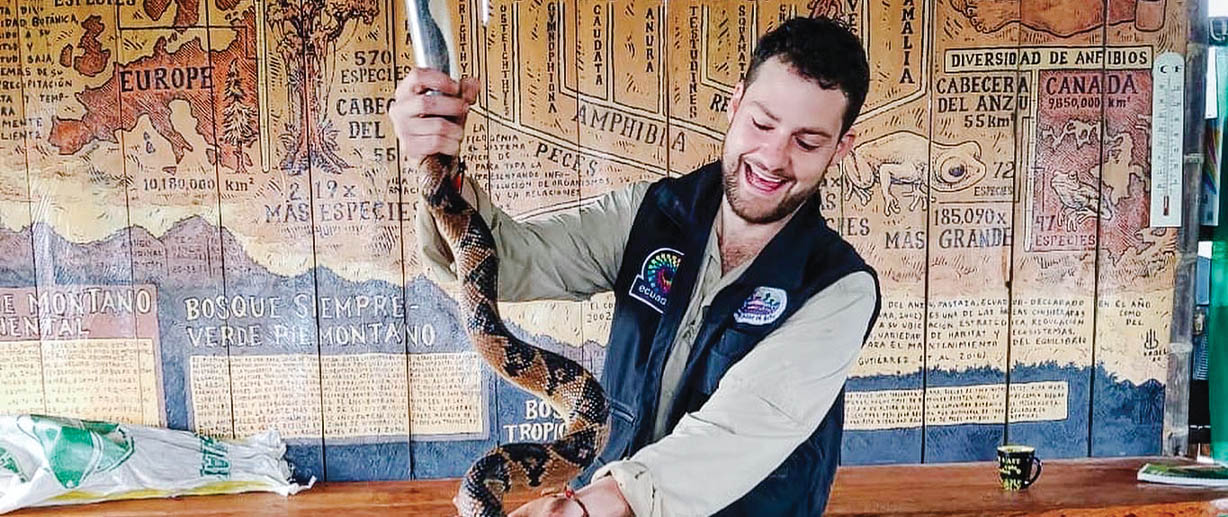By Robert W. Dalton
Alex Bentley ’17 had a good day on Feb. 16, 2021.
A man in the Ecuadorian village that Bentley has made his home brought him a snake. It turned out to be a new species of dwarf boa — one of about 20 new species of reptiles and amphibians that Bentley and his team have discovered.
The man with the snake was just as important. Before Bentley arrived on the scene as research coordinator at Sumak Kawsay In Situ in 2019, the snake would have met a different fate.
“One of the coolest things is that the guy who found it and his brothers used to all kill snakes,” says Bentley. “This is the most biologically diverse place on Earth, and it’s important for people to understand that and take pride in it. I have tried to inspire in people a desire to protect what they have. That’s exactly what happened.”
Bentley immediately realized that the snake was unlike any he had ever seen. He contacted colleagues and discovered a similar snake had been captured a few years earlier in the same area.
“Fortunately, we had a male and female, and you need both to describe a new species,” says Bentley.
Describing a new species is a tedious process that can take years. The first step, after acquiring a male and female, was for Bentley and his team to analyze the genetic makeup of the pair. After that, they collected evidence that differentiated the species from its closest ancestor, took a 3D CAT scan of the snake’s cranium, and compared the habitat, distribution and natural history with the closest species.
The description of the new species was published in December 2022.
Bentley and his team have since identified a new species of frog (a process that took three years), a new species of tarantula that will soon be published and a new genus of pseudo-scorpion. He also has published a field guide that details the region’s status as the most diverse place on Earth for reptiles and amphibians, with 285 species in an area smaller than metropolitan London.
Bentley, who says he fell in love with studying snakes when he was 5 years old, had made up his mind to attend another college but came to Wofford for a visit. That’s when he met Dr. Charles Smith, associate professor of biology.
“He recognized my dedication and took me under his wing,” Bentley says. “He was a wonderful mentor. I had a really good educational experience at Wofford. I was able to establish personal relationships with the professors, and the biological training I got was great for my style of learning."
Bentley first studied in Ecuador as part of a comparative ecology program during his junior year. He knew then that he would be back, and he doesn’t picture living anywhere else.
“I tell people this is my habitat,” he says. “I built my house here, got a dog and little family. There’s a jungle and trails behind the house and spaces for environmental education. I’m really happy here.”
